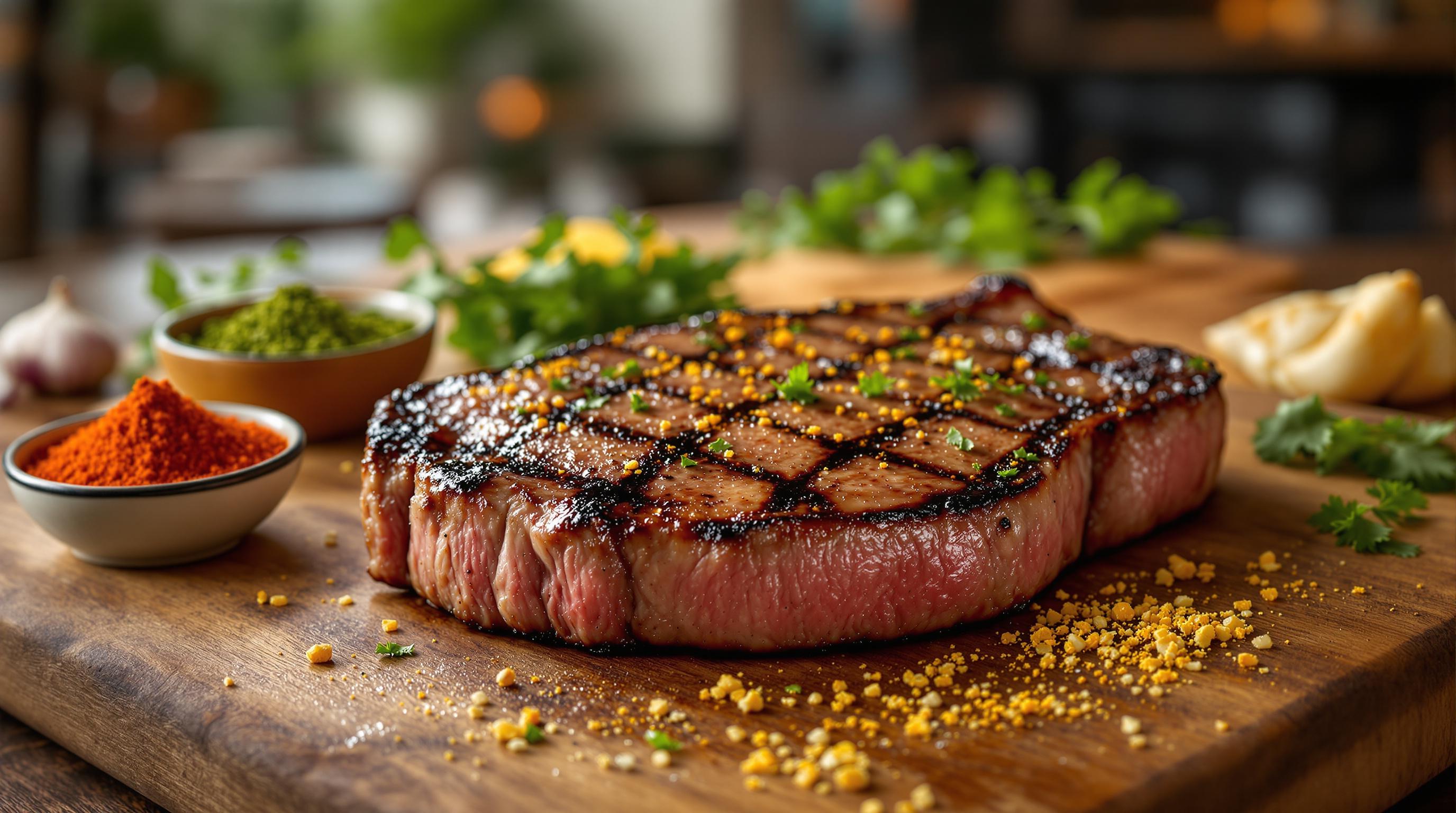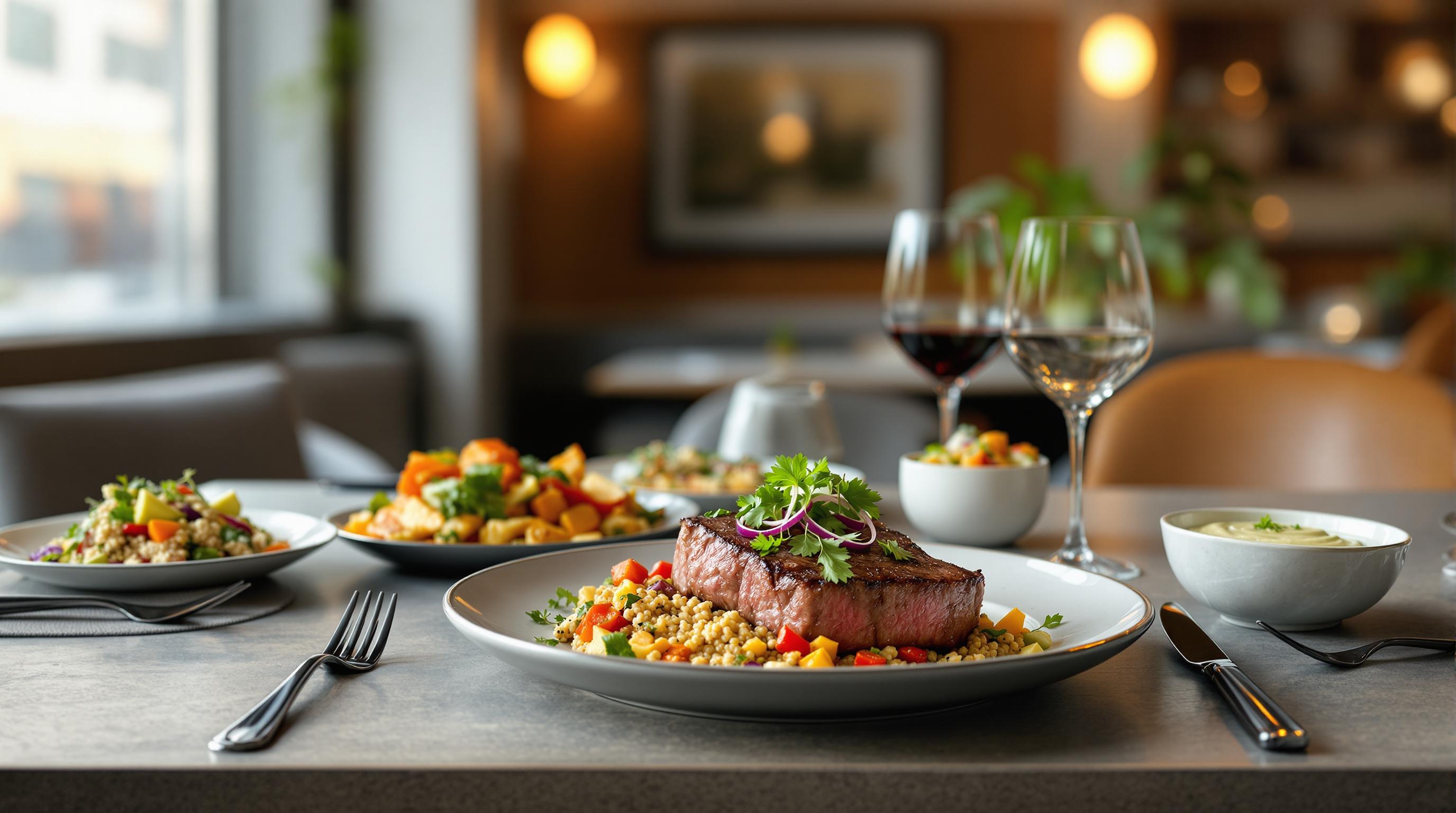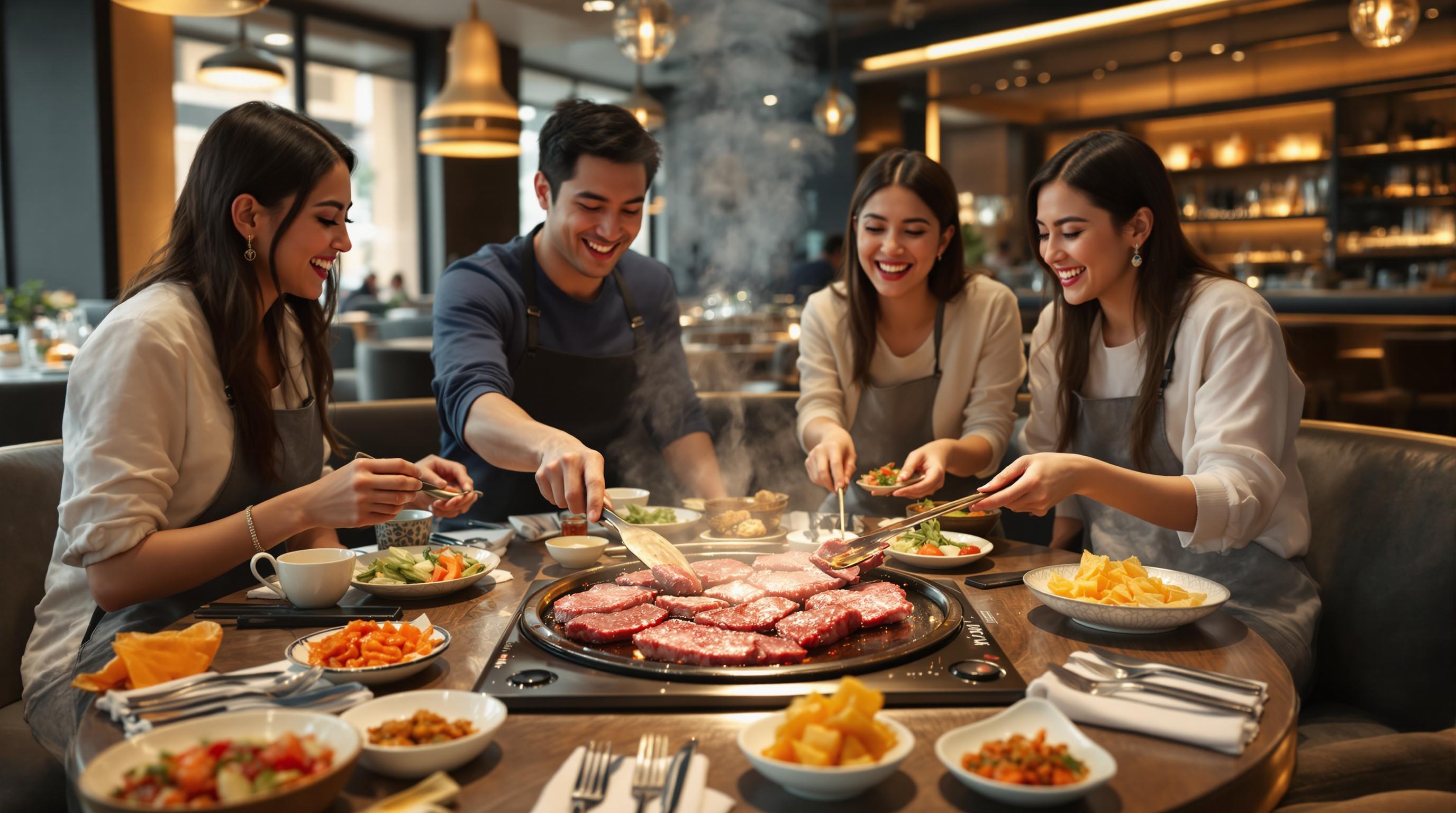Looking for the best Wagyu or Kobe beef dishes in NYC? Here's what you need to know:
- Wagyu refers to Japanese cattle known for rich marbling and tender texture. It’s graded from A1 to A5, with A5 being the highest quality.
- Kobe beef, a type of Wagyu, is even more exclusive, coming from specific cattle in Japan’s Hyogo Prefecture under strict certification standards.
- Seasonal menus in NYC feature lighter dishes like Wagyu carpaccio in spring and summer, while fall and winter bring richer options like grilled or aged cuts.
- Key Spring 2025 Dishes: Wagyu carpaccio, grilled Wagyu strip loin, and Wagyu tataki.
- Kobe beef is rare in NYC due to import restrictions, making it a premium choice for special occasions.
Quick Comparison
| Feature | Wagyu Beef | Kobe Beef |
|---|---|---|
| Origin | Japanese cattle | Hyogo Prefecture, Japan |
| Texture | Tender, rich marbling | Buttery, melts in your mouth |
| Availability | Widely available in NYC | Limited to select restaurants |
| Price | Expensive but more accessible | Higher cost due to exclusivity |
| Best For | Casual or upscale dining | Special occasions, upscale settings |
Tip: Choose Wagyu for bold, beefy flavors and versatility. Opt for Kobe if you’re seeking unmatched tenderness and exclusivity. Always check seasonal menus for the latest offerings!
NYC's Seasonal Wagyu Offerings
Wagyu Beef Standards
Wagyu beef is graded by the Japanese Meat Grading Association (JMGA) on a scale from A1 to A5, with A5 representing the highest level of quality. A Beef Marbling Score (BMS) of 8+ is a hallmark of its rich marbling.
Key traits of high-quality Wagyu include:
- Deep red meat color
- Fine, web-like marbling throughout
- Fat that ranges from creamy white to slightly yellow
- A firm yet tender texture when chilled
These strict standards form the foundation for the exceptional Wagyu dishes now being served across NYC.
Current Wagyu Dishes in NYC
NYC steakhouses are bringing these standards to life with expertly crafted seasonal dishes.
Spring 2025 Signature Dishes:
1. Thin-Sliced Wagyu Carpaccio
This dish features A5 Wagyu sliced paper-thin, paired with microgreens and citrus dressing. It's a perfect showcase of the beef's marbling and delicate texture.
2. Grilled Wagyu Strip Loin
Prepared with minimal seasoning to let the beef's natural flavors shine, this grilled dish is served alongside fresh spring vegetables. Precision cooking ensures a tender, juicy result.
3. Wagyu Tataki
Inspired by Japanese cuisine, Wagyu Tataki is lightly seared on the outside, leaving the center raw. It's served chilled with ponzu sauce and spring onions for a refreshing, seasonal option.
For in-depth reviews and the latest seasonal menus, check out the NY Steakhouse Guide.
| Spring 2025 Wagyu Preparation | Characteristics | Ideal Serving Temperature |
|---|---|---|
| Carpaccio | Raw, paper-thin slices | Served chilled (40°F) |
| Strip Loin | Grilled, medium-rare | Served at 130-135°F |
| Tataki | Lightly seared with raw center | Served chilled (45°F) |
These dishes highlight the incredible quality and versatility of Wagyu beef.
Kobe Beef in NYC
Kobe Certification Requirements
Kobe beef is held to strict certification standards in Japan, focusing on breed purity and marbling quality. Restaurants serving Kobe beef in NYC ensure their offerings meet these high standards, which are key to its signature flavor and melt-in-your-mouth texture.
Kobe Beef on NYC Menus
The certification process and import restrictions make Kobe beef a rare find in NYC. Only a handful of restaurants can offer authentic Kobe, often featuring it on seasonal menus. It's a good idea to check directly with restaurants for current availability and menu details.
For more information and updates on Kobe beef options in New York City, check out the NY Steakhouse Guide, which includes reviews and a full directory of steakhouses in the area.
sbb-itb-e6be165
Wagyu vs. Kobe: Direct Comparison
Flavor and Texture Differences
Wagyu and Kobe both stand out for their intense marbling and tenderness. Kobe, known for its strict certification process, offers a rich, buttery texture that practically melts in your mouth. On the other hand, Wagyu tends to have a firmer texture with a bold, beefy taste influenced by variations in diet and care. These differences play a big role in their pricing and overall dining experience.
Cost Analysis
Kobe generally costs more than Wagyu due to its strict certification process and limited availability. Seasonal menu options can also affect pricing, with exclusive offerings adding to Kobe's high-end appeal. Beyond the price tag, the setting and presentation often highlight the distinction between these two premium choices.
Restaurant Settings
The dining atmosphere can vary significantly. Restaurants serving Kobe often focus on creating an upscale, refined experience to match its exclusivity. Wagyu, however, can be found in a wider range of settings, from casual spots to high-end venues. For the latest details on specialty cuts and dining options in NYC, check out NY Steakhouse Guide.
WAGYU vs. KOBE beef - WHAT is the DIFFERENCE?
Making Your Selection
NYC's seasonal menus showcase both Wagyu and Kobe beef, but how do you decide which to choose? Here's a quick guide to help you pick.
Main Differences
Wagyu can be enjoyed in a range of settings, from casual eateries to fine dining, offering various preparation styles. Kobe, on the other hand, is all about exclusivity. Its certification ensures a premium experience, often paired with upscale dining to match its elite reputation. Let these differences steer your choice based on the occasion and mood.
Recommendations
When deciding between Wagyu and Kobe, keep these factors in mind:
-
Dining Experience:
- Kobe: Perfect for celebrating special moments in high-end restaurants.
- Wagyu: Works in both casual and refined settings, with plenty of cooking styles to explore.
-
Taste Profile:
- Kobe is known for its unmatched tenderness.
- Wagyu offers a rich, bold flavor that stands out.
-
Budget:
- Pricing varies. Check the menu ahead of time to ensure it fits your plans.
-
Seasonal Menus:
- Seasonal offerings may impact availability - review current selections for the best options.
For the latest recommendations and seasonal updates, check out the NY Steakhouse Guide.


